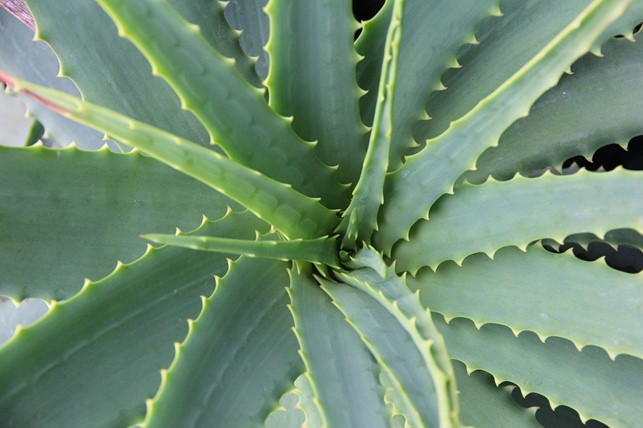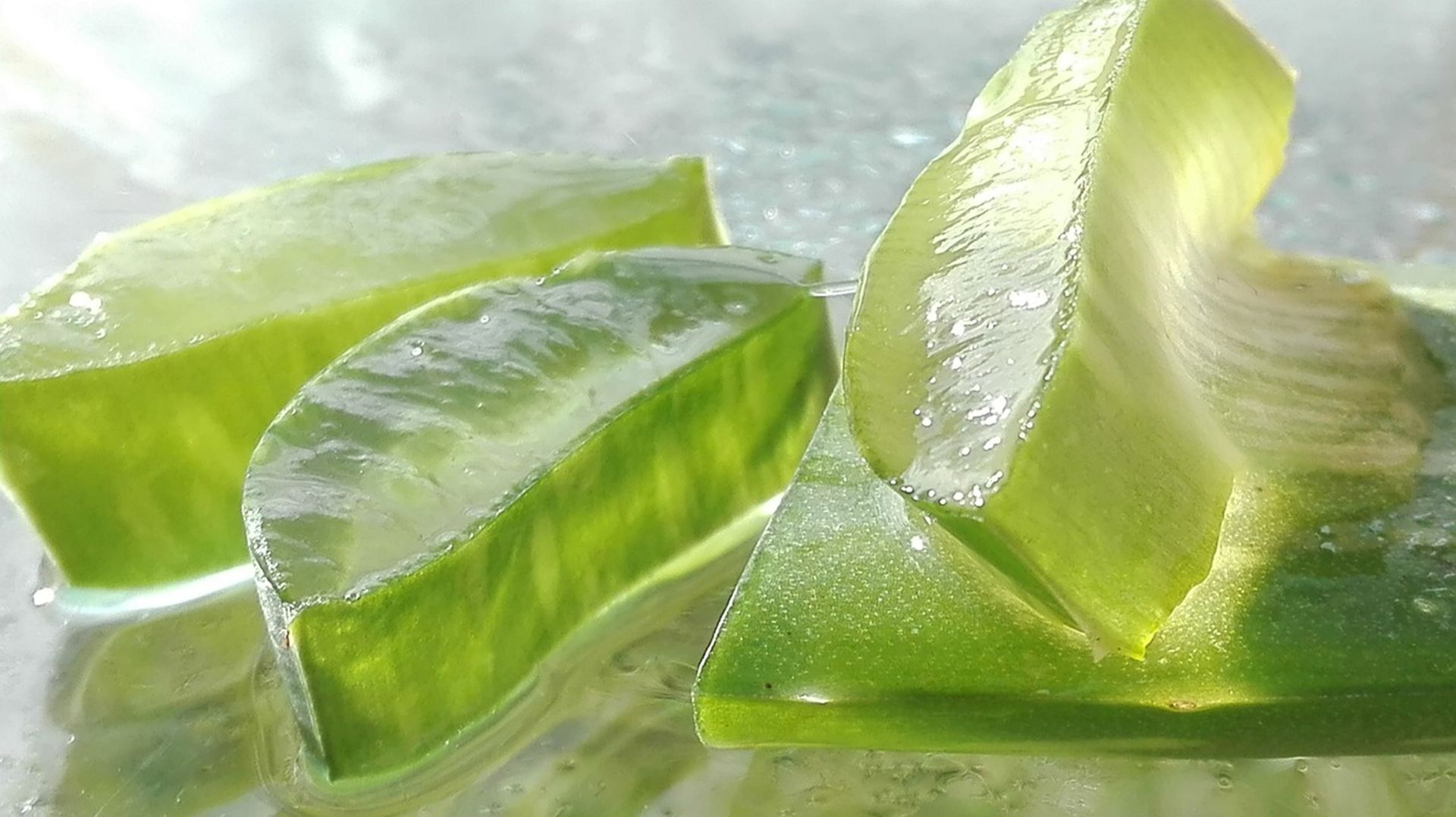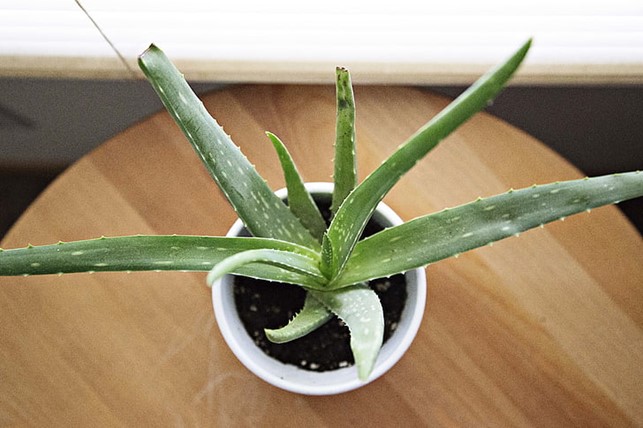A succulent with a thousand virtues, aloe vera appeals to many amateur gardeners for its resistance and tolerance to forgotten watering. Renowned for its cosmetic and dietary virtues, this pretty plant is also appreciated for its graphic and decorative qualities.
Considered a good-luck plant in many countries, aloe vera is characterized by long, pointed, fleshy leaves that branch out from its center.
Origin of aloe vera
There are over 400 different species of aloe in the world. They range in size from a few centimetres to several metres in height. The most popular and best-known species is undoubtedly aloe barbadensis (better known by its common name of aloe vera).
Native to arid, semi-arid and tropical regions, aloes are sensitive to frost, which limits their use in the garden to frost-free areas, unless grown in pots and moved to a warmer location in winter. Most aloes bloom in winter, attracting hummingbirds to their bright tubular flowers.


Aloe varieties
Interesting varieties include :
- Aloe arborescens: large tree species grown outdoors
- Aloe barbadensis: aloe barbadensis or aloe vera, the best-known aloe.
- Aloe brevifolia: compact, lush aloe with bluish-grey-green foliage spotted with white
- Aloe variegata: dwarf plant (max. 20 cm) with smooth leaves and irregular white stripes.
- Aloe polyphylla: attractive spiral aloe, an endangered and protected plant. Rarer in cultivation.
- Aloe aristata: Small plant with white, saw-toothed leaves. Orange-red flowers.
- Aloe glauca: A larger aloe species with silver-blue leaves.
- Aloe rauhii: leaves more white than green.

Which pot for my aloe vera?
Growing aloe vera in a pot is child's play. And your plant will grow quickly if you follow a few simple instructions.
- Pot size
Choose a pot as wide as it is deep. Under optimum conditions, the plant grows quickly and takes up a lot of space. Give it enough space to feel at ease and grow harmoniously. - Drainage
When choosing your pot, make sure there are drainage holes at the bottom. Roots will rot if the soil is not sufficiently drained. - Potting soil
Aloe vera plants are succulents, so use a well-draining mix like those used for cacti and succulents. Do not use soil.


How do I care for potted aloe vera?
Aloe vera is a hardy plant that's easy to care for. Here's how to look after it!
☀ Light
Whichever aloe you choose, keep it in a very bright spot. But avoid direct sunlight, as the plant tends to dry out and its leaves turn yellow.
❀ Flowering
Mature aloe vera plants sometimes produce a large flower spike - called an inflorescence - from which dozens of yellow or red tubular flowers appear.
 Unfortunately, flowering is rare indoors, as the plant needs almost ideal conditions to produce flowers: plenty of light, sufficient water and the right temperature range.
Unfortunately, flowering is rare indoors, as the plant needs almost ideal conditions to produce flowers: plenty of light, sufficient water and the right temperature range.
💧 Watering and maintenance
Water your aloe vera deeply but infrequently. About every 2 weeks in spring and summer and once a month in winter. Use your finger to test for dryness before watering. To discourage rotting, let the soil dry to a depth of at least 5-6 cm between waterings.
Fertilize sparingly (no more than once a month), and only in spring and summer with a balanced indoor plant formula.
🌡️ Temperature
Aloe vera grows best at temperatures between 18 and 27°C. Temperatures in most houses and apartments are ideal.
☠️ Toxicity
The gel from aloe vera leaves can be used topically, but should not be ingested. It can cause unpleasant symptoms such as nausea and indigestion, and can even be toxic in large quantities.
🦟 Diseases, pests and parasites
Grown in the right conditions, in warm conditions and without excess water, aloe remains free of disease and parasites. However, it is particularly sensitive to soil moisture.

🗑 Potting and multiplication
Potting: use a pot 1/3 larger than the root mass. Since aloe vera roots grow horizontally and the plant can become heavy with age, choose a wide, stable pot.
Multiplication: Mature aloe vera plants (over 3 years old) begin to produce shoots from the main stem. These "babies" can be separated from the mother plant and transplanted to make new plants.
Keep the "babies" out of the soil mix for a few days to allow callus formation. During this period, leave them in a warm area of your home, with access to bright, indirect sunlight. Once the calluses have formed, plant them in an individual container and leave them to dry for a week to ten days before watering thoroughly.

Common cultivation errors
- Horizontal growth: If aloe vera leaves grow horizontally and flat instead of upwards, this may be a sign that they are not receiving enough sunlight.
- Yellow or brown leaves: If the leaves turn brown or yellow, it means the plant is too exposed to direct sunlight. But it can also mean that it has had too much water and that some of its roots are rotting. In this case, it's best to change the pot, after cleaning and removing any soft or black roots.
- Thin, curly leaves: When leaves become thin and curly, it means they're not getting enough water. The leaves curl because the plant uses its own water to survive.
- Flat plant: if the leaves are limp and lack vigor, it's probably due to a lack of natural light. Keep room temperature above 20°C.
- Slow growth: If your plant grows very slowly, it may mean that the soil or water is too alkaline.


The benefits of aloe vera
Aloe vera's list of virtues is long. The plant has been used in folk medicine since ancient times, thanks to its powerful anti-inflammatory properties.
The healing properties of fresh aloe leaves
There are hundreds of products containing aloe vera on the market, but using a fresh leaf is the cheapest way to benefit from aloe's healing properties on a daily basis. The thicker the leaf you remove, the higher its juice content.
The juice and flesh of the leaves serve as an anesthetic and cooling gel. Sunburned skin absorbs aloe, stopping pain and swelling while hydrating damaged skin cells.
Simply remove a leaf from a live plant and open it along its entire length. Then either squeeze out the gelatinous material and apply it to the affected area, or lay the whole side of the open leaf directly on the affected area and bandage it lightly.

Whole aloe vera is reputed to purify ambient air
A single aloe vera plant is capable of absorbing a large proportion of a room's carbon monoxide. It is also said to reduce allergies and limit the proliferation of dust mites. In short, it has a positive effect on general well-being.
And according to some studies, in addition to its depolluting properties, aloe vera also has the power to combat the harmful aspects of electromagnetic waves.

Browse the collection